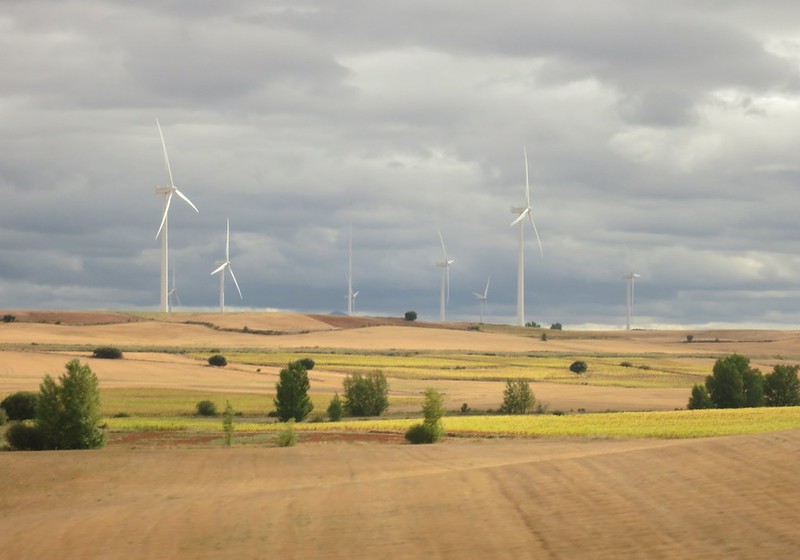The Spanish government has proposed tightening a target to cut national emissions at the centre of the country’s first climate-related litigation.
It published a draft version of an updated climate and energy plan yesterday, which toughens the 2030 emissions target from the previous 23% to the new 32% compared with 1990.
It has tougher targets too for increasing energy efficiency and renewables and new measures to boost green hydrogen and biomethane.
However, campaigners do not think this is ambitious enough and say it doesn’t represent a “fair share” of the country’s global responsibility for climate change. They are calling for at least 55%.
US ‘still on the fence’ as nations debate global shipping emission tax
Greenpeace Espana, Ecologistas en Acción and Oxfam Spain first challenged the government on its climate measures in 2020, filing a lawsuit because it had not approved a national climate and energy plan that covered the period to the end of 2030. Such a plan was required under EU law by the end of 2019.
While the case was going through the courts, Spain agreed a long-term decarbonisation strategy and passed its first climate law – a decade after it was first called for – which included a net zero target for 2050. It also finally approved a national energy and climate plan in March 2021.
Campaigners dropped part of their claim about the existence of the plan, saying it “represented an important advance compared to the policies of previous governments”.
But they continued to argue that the plan was too weak and that the goal of cutting emissions by “at least” 23% by 2030 compared with 1990 was not consistent with the Paris Agreement’s 1.5C global warming threshold. They called instead for a goal of at least 55%, consistent with the wider EU target for that year.
Together with campaigners from Coordinadora de ONG para el Desarrollo they filed a second case making these arguments.
Compromised objectives
The Spanish government, in its responses to the court, stressed that the Paris Agreement did not impose specific levels of emission cuts on state signatories.
It said the EU target of a 55% cut by 2030 was a bloc average, which had to take into account cost efficiency, justice and individual state economies.
Norway approves oil and gas fields despite Cop fossil phase-out push
Spain said the 55% EU-level cut had been pushed for by a group of like-minded countries, including Spain, which it described as “ambition leaders”.
It also claimed that the invasion of Ukraine had caused a serious energy crisis which would “undoubtedly” compromise climate objectives.
This has been contracted by the International Energy Agency’s head Fatih Birol who said that “the crisis is set to accelerate the clean energy transition”.
Javier Andaluz, of Ecologistas en Acción, did not expect the latest version of the climate plan to include such a big jump in the 2030 target but said it still falls well short of Spain’s fair share based on climate science and its contribution to global emissions. From a climate justice perspective, he maintains “Spain has to lose at least 55%”.
Spain’s Supreme Court voted on the pair of lawsuits last week, although its decision is not yet public.
The lawsuits are the first climate litigation against Spain and campaigners hope to build on previous legal successes against European states, including in the Netherlands, Germany and France. In Germany, the landmark ruling led the government to raise its 2030 emissions target to 65%.
But Ana Barreira, founding director of environmental law organisation IIDMA, does not think there is a strong legal case against Spain.
She pointed out that, since the Rio Earth Summit in 1992 governments have generally accepted the principle that they have “common but differentiated responsibilities” to protect the environment, a principle that carried through to the Paris Agreement.
Barreira added that the EU accepted Spain’s original climate plan and its contribution to the bloc’s emission cuts.
The slow pace of developing climate policies in Spain was largely due to deadlocks in parliament where for months no political party held a majority.
The incumbent government has done a substantial amount of work over the past two years. Spain is about to take over presidency of the EU for the next six months, and has made efforts to accelerate the climate transition one of its key priorities.
The government has also been forthright in attributing extreme weather and disasters on the ground to climate change.
More drought
The country is currently in the grip of a long-running drought that threatens its agriculture, industry and domestic water resources. Minister for ecological transition Teresa Ribera recently said climate change was leading to “a much greater incidence of more frequent and intense episodes” of such episodes.
Spain is particularly vulnerable to global warming. This year’s spring was the hottest ever – a record made “almost impossible” without climate change, according to a scientific attribution study. Deaths from heat soared during last summer’s heatwave.
Andaluz said the impacts of climate change were already “quite clear” in Spain, and there was a widespread acceptance of the causes.
However, the issue of water management to tackle drought was an issue during regional and municipal elections earlier this year and is likely to crop up again ahead of a general election in December.
